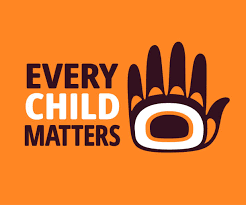Understanding the Importance of Every Child Matters

Introduction
The phrase ‘Every Child Matters’ has gained significant traction in Canada as a rallying cry for child welfare, education, and rights. With historical roots linked to the legacy of residential schools, this movement emphasizes the need for systemic changes to protect and nurture children from various walks of life. It represents not only a moral imperative but also a legal recognition of the rights each child holds within our society. As Canada grapples with its past and seeks to create a more inclusive and equitable future, the message of ‘Every Child Matters’ highlights the essential understanding that every child should be given the opportunity to thrive.
Recent Developments
In 2021, the discovery of unmarked graves at former residential school sites shocked the nation and brought the plight of Indigenous children to the forefront of public consciousness. Subsequently, various organizations and government bodies have strived to honor the memory of these children while advocating for current and future generations. The National Day for Truth and Reconciliation on September 30 serves as a significant reminder of the ongoing struggles faced by Indigenous families and communities and marks an opportunity for education, reflection, and solidarity.
Numerous initiatives have been launched across Canada to fulfill the vision that ‘Every Child Matters,’ focusing on building supportive environments, promoting mental health, and integrating Indigenous knowledge into the curriculum. Various provinces have introduced legislation aimed at improving child welfare systems and ensuring that no child is left behind. For instance, in British Columbia, the Ministry of Children and Family Development has initiated programs to improve the child protection process, ensuring they are trauma-informed and culturally sensitive.
Community Engagement and Action
Communities across the nation are also participating in dialogue and action initiatives that align with the principles of ‘Every Child Matters.’ Local groups are adopting educational programs that raise awareness about the importance of protecting children’s rights, fostering healthier societal environments, and creating advocacy networks. Events are organized to foster conversations about the needs of children in various backgrounds, ensuring that all voices are heard and valued.
Conclusion
The message that ‘Every Child Matters’ resonates not only within the framework of historical injustice but also as a contemporary movement that seeks to protect and empower children across all communities in Canada. As evidence mounts that investing in children leads to stronger societies, it is crucial for policymakers, educators, and citizens alike to commit to honoring this principle in actionable ways. By nourishing the rights of every child, Canada can build a brighter future where all children have the opportunity to succeed, unhindered by the injustices of the past.









